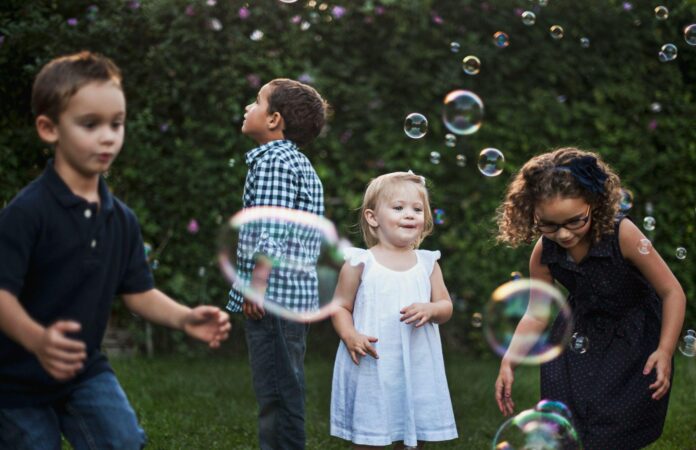
Sensory stimulation is important in a child’s development as it helps develop cognitive function. Different sensory stimuli, such as touch, sight, sound, taste, and smell, can help children learn and retain information more effectively, improve understanding, and contribute to successful learning.
Sensory stimulation can be useful for kids of all ages, from toddlers to preschoolers. It is useful in all stages of a child’s development. By engaging multiple senses, children are able to make connections between different pieces of information and enhance their overall learning experience. Providing a variety of sensory experiences can also make learning more engaging and enjoyable for children, leading to increased motivation and curiosity.
Here is how different sensory stimuli contribute to effective learning.
Visual Stimulation
Visual stimulation helps children process information more quickly and accurately, leading to improved memory retention and enhanced comprehension. Additionally, it can also enhance creativity and critical thinking skills by engaging the brain in different ways.
Children may perceive more complex concepts more easily with the help of visual stimulation. Of course, no child is the same, and this type of stimulation is best suited for visual learners in all stages of development.
Visual stimulation can also help children stay focused and engaged during learning activities, making the educational experience more enjoyable and effective. Visual stimuli such as images, diagrams, videos, and written text can all help children retain information.
Tactile Stimulation
Tactile stimulation, also known as kinesthetic stimulation, involves physical activity such as touching, feeling, and moving objects. This type of stimulation can help children improve their fine motor skills and hand-eye coordination. Additionally, tactile stimulation can enhance sensory processing and overall cognitive development in children.
Activities such as writing, drawing, using physical objects, or playing an interactive game with a device like an Obie projector can provide children with opportunities to engage in tactile stimulation.
Auditory Stimulation
Auditory stimulation may help children with hearing development and recognizing sounds. Music, spoken word, or other sounds can be used. This type of stimulation can also improve language skills and enhance communication abilities. By engaging the auditory senses, children can strengthen their listening skills and develop a deeper understanding of spoken language.
Multisensory Stimulation
Multisensory stimulation enables kids to use a number of senses at the same time. It could be reading (visual) while listening to a story (auditory) or looking (visual) at a projected Beam game while playing it and moving around (tactile).
These exercises encourage engagement and improve information retention. Incorporating multisensory stimulation activities into a child’s routine can enhance their learning experience and help them develop various skills simultaneously.
Olfactory Stimulation
This stimulation is directly related to the sense of smell. Certain smells can trigger memories and emotions. These can be useful tools in learning activities. For example, using scented markers during a drawing activity can enhance the experience and make it more engaging for children.
Gustatory Stimulation
Gustatory stimulation, as the name suggests, refers to stimulation that is focused on taste. Educators can implement cooking with children as a way to incorporate gustatory stimulation into their learning experience. Cooking activities can help children explore different tastes and textures while also teaching them valuable skills such as following instructions and measuring ingredients accurately.
Final Words
These exercises can be implemented in regular classroom settings, as well as in special education programs or therapy sessions, to cater to different learning needs and abilities. It is important to remember that children learn best when they are actively engaged and having fun, so incorporating hands-on activities can make learning more enjoyable and memorable for them. By stimulating their senses in different ways, educators can help children develop a deeper understanding and appreciation for the world around them.








